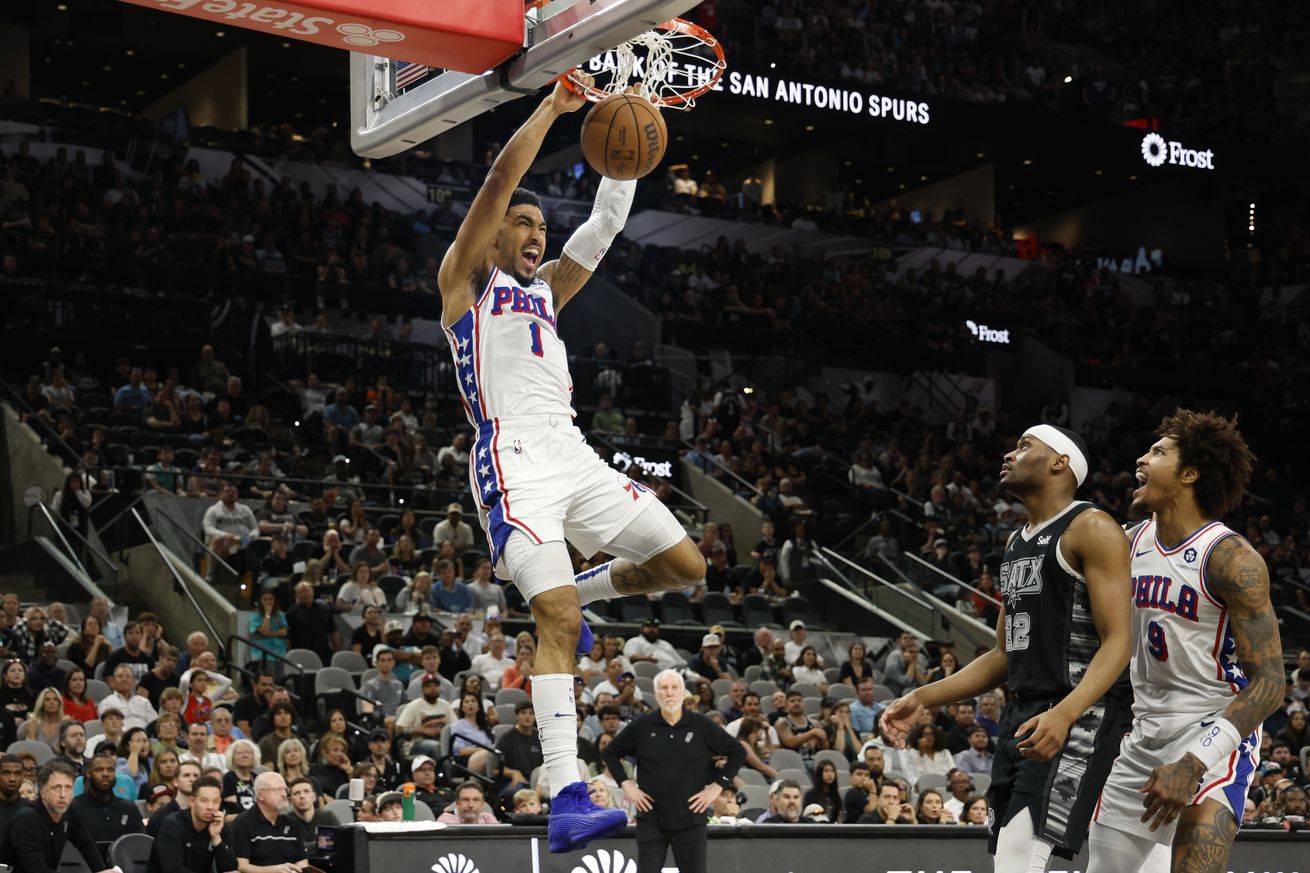
The conversation around KJ Martin has centered around his tradeable contract, but he can also be a useful on-court contributor in the meantime.
When KJ Martin addressed reporters at his exit interview at the conclusion of last season, he very much sounded like someone ready to look for opportunities elsewhere. As the offseason progressed however, it became clear that a reunion was in the best interest for both Martin and the Sixers, at least in the short term.
After most of the dust had settled in free agency, the Sixers brought Martin back on a two-year deal worth around $16 million (second-year non-guaranteed). This gave Martin more money than he expected to get, and the Sixers an easily tradable salary once he’s eligible to be moved in January.
This does put Martin in an odd spot in the short term. He’s basically a sitting duck on this roster, but it’s also possible he’s the first power forward off the bench on the depth chart.
So how can the Sixers make the most out of Martin for when the time comes to trade him?
Well first of all, his status as a forward makes it complicated. It’s impossible to be a contributing role player from the wing if you can’t shoot, and it really doesn’t look like Martin will ever be able to develop that area of his game.
Given his form, it’s honestly a miracle he shot in the mid-thirties from three his first two seasons in the league. His hands always kind of look like they’re fighting each other. His shooting percentages have regressed pretty much every year of his career, both from three-point range and from the free throw line, which is much more concerning.
That’s a shame because he possesses a lot of other NBA-level tools. I described him earlier this offseason as a 6-foot-6 pogo stick.
Last season, Nick Nurse did try to get creative to still find a way to use those tools. The best solution they found was using Martin as a small-ball center. While the Sixers only played 149 possessions later with Martin playing the five, a sample size that’s pretty much a game and a half, it had some success.
They outscored opponents by 1.9 points in those minutes and had an effective field goal percentage of 55.5%, slightly above average according to Cleaning the Glass. Those lineups are more than capable of scoring enough points. With the right guys around Martin, they’re perfectly switchable enough to defend as well, but rebounding can really be the Achilles heel of those lineups.
With Martin playing center, opposing teams grabbed offensive rebounds on 36.8% of all defensive possessions, putting them in the dead last percentile in the league. So this is a good gadget lineup for the Sixers to use, but probably not one that will be very sustainable.
It’ll be a look they can use to throw off teams for a few minutes every now and then, but likely not more than that.
But, as the Sixers very much experienced last season, it’s important to have a plan for the third string center on the roster with this group. With second round rookie Adem Bona likely Delaware-bound for much of this upcoming season, Martin very well could slide in behind Andre Drummond as the third string center.
So, while Martin being traded this February feels like an inevitability, all parties involved will benefit from trying to make the most out of him in the meantime.
